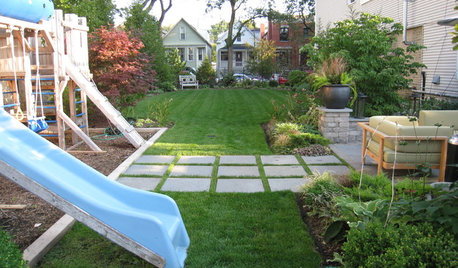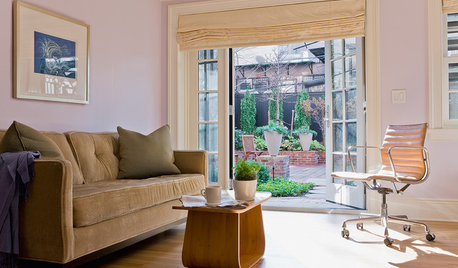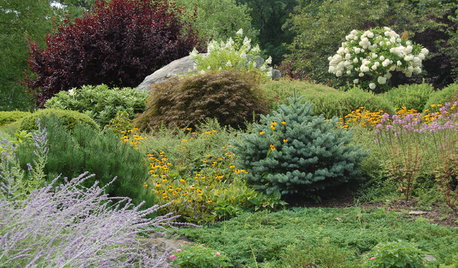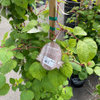Will Arborvitae desicate in drought?
eclecticcottage
11 years ago
Related Stories

GARDENING GUIDESGreat Garden Combo: 3 Wonderful Plants for a Deer-Resistant Screen
Protect your privacy and keep deer at bay with a planting trio that turns a problem garden area into a highlight
Full Story
SIDE YARD IDEASNarrow Trees for Tight Garden Spaces
Boost interest in a side yard or another space-challenged area with the fragrance and color of these columnar trees
Full Story
LANDSCAPE DESIGNFlood-Tolerant Native Trees for Soggy Soil
Swampy sites, floodplains, even standing water ... if you've got a soggy landscape, these trees are for you
Full Story
GARDENING GUIDESGarden Myths to Debunk as You Dig This Fall and Rest Over Winter
Termites hate wood mulch, don’t amend soil for trees, avoid gravel in planters — and more nuggets of garden wisdom
Full Story
GARDENING GUIDESWhat Are Your Spring Gardening Plans?
Tearing out the lawn? Planting edibles? Starting from scratch? Tell us what you plan to change in your garden this year
Full Story
LIFE6 Tips for Teaching Your Kids to Be Good Neighbors
Everyone wins when your children learn to respect boundaries, get help when they need it and show others they care
Full Story
GARDENING AND LANDSCAPINGGrow a Lush Privacy Screen
No need to wait forever for patio privacy the green way. These 10 ideas will get your screening up and running in no time
Full Story
GREEN BUILDINGWhat's LEED All About, Anyway?
If you're looking for a sustainable, energy-efficient home, look into LEED certification. Learn about the program and its rating system here
Full Story
REMODELING GUIDESThe Case for Waiting to Remodel
We know, you're excited to make your home match your vision. But your vision may change once you've lived there awhile
Full Story
GARDENING GUIDESDesigning With Conifers: Finding the Right Garden Bedmates
In gardening, building on commonalities creates an enduring relationship
Full Story






denninmi
ken_adrian Adrian MI cold Z5
Related Professionals
Brunswick Landscape Contractors · Milford Mill Landscape Contractors · Mount Kisco Landscape Contractors · Paso Robles Landscape Contractors · Seven Hills Landscape Contractors · Sugar Hill Landscape Contractors · Tacoma Landscape Contractors · Wickliffe Landscape Contractors · Woodland Landscape Contractors · Forest Hill Landscape Contractors · Santa Cruz Window Contractors · York Decks, Patios & Outdoor Enclosures · Aventura Decks, Patios & Outdoor Enclosures · Columbia Decks, Patios & Outdoor Enclosures · Hampton Bays Decks, Patios & Outdoor Enclosuresgardengal48 (PNW Z8/9)
ken_adrian Adrian MI cold Z5
gardengal48 (PNW Z8/9)
eclecticcottageOriginal Author